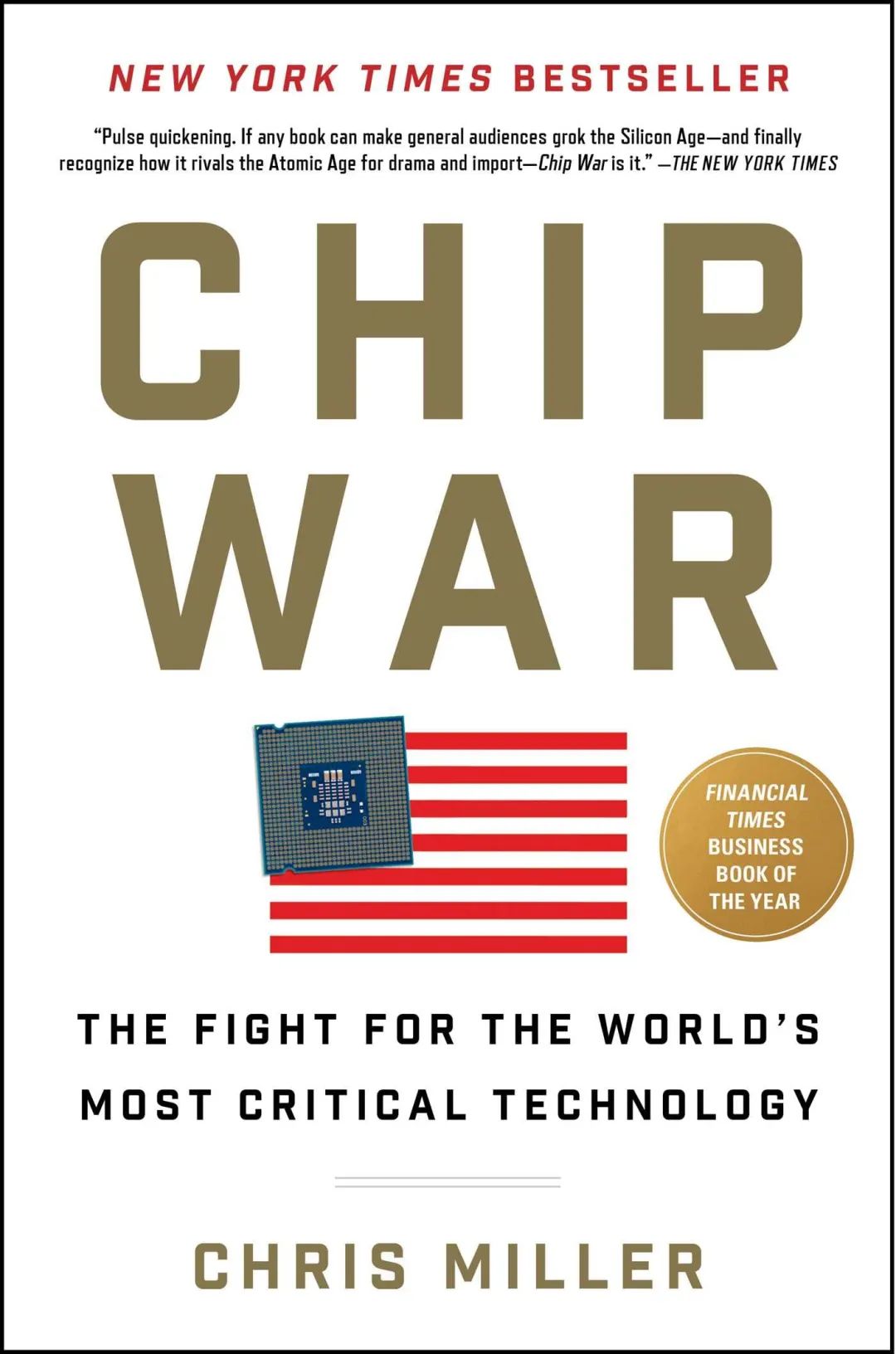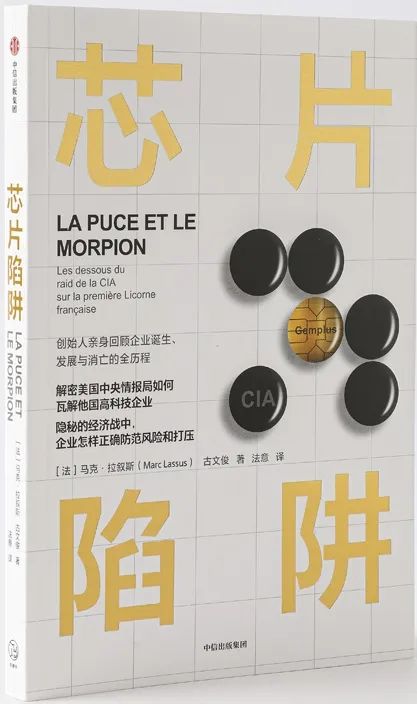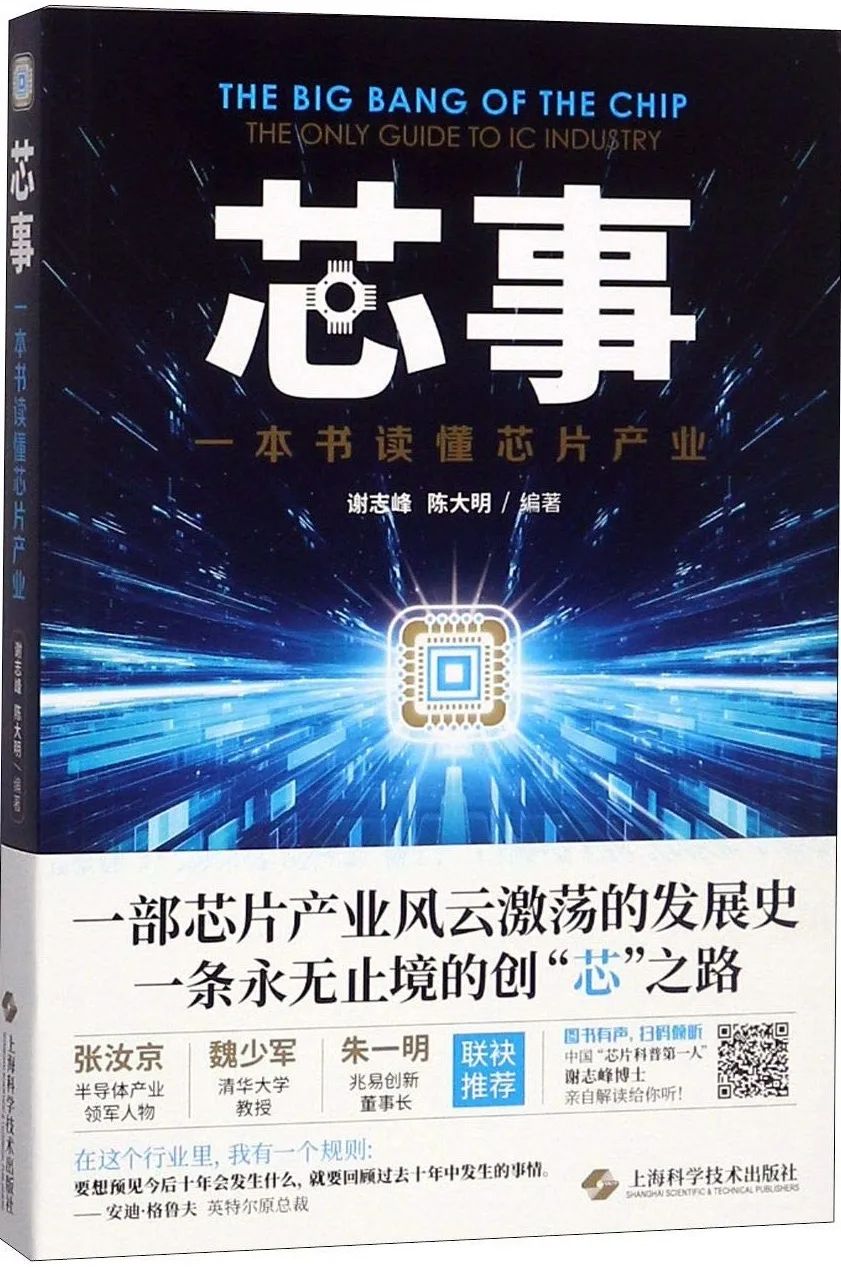The chip war "author: Chris Miller (Chris Miller)

Book title:
Chip War
"Chip Wars"
Publisher:
Scribner's Press
brief introduction:
The book explains the long-running battle between the United States and China over microchip technology. Microchips have been called the "new oil", the scarce resource on which the modern world depends. Almost everything from military, economic, and geopolitical forces at the macro level to microwave ovens, smartphones, stock markets, etc. at the micro level relies on semiconductors. The United States once built the fastest chips, maintaining its lead as a superpower. America's dominance is slipping today, while China is struggling to acquire the world's most important technology. In order to catch up with the leading position of the United States, China spends more money importing chips than importing oil, and invests tens of billions of dollars in the chip industry.
The book consists of eight parts: the first part of the chip "Cold War", including from steel to silicon, technological geniuses (Noyce and Kilby), integrated circuits, etc.; the second part of American circuits, including Soviet Silicon Valley, "replication", Transistor Salesman, Precision Strike, etc.; Part 3 Loss of Leadership, including Intense Competition, Trash Trash, Death Spiral, etc.; Part 4 American Recovery, including Disrupting Intel, Enemy of the Enemy, War Heroes, etc.; Part 5 Integrated Circuits and the integrated world, including lithography wars, the innovator's dilemma, running faster, etc.; the sixth part of offshore innovation, including fabs, silent revolution, Apple silicon, extreme ultraviolet, etc.; the seventh part of China's challenges, Including Made in China, Launching Attacks, Technology Transfer, Imperative Merger, etc.; Part Eight Chip Choke Circle, including Fujian Jinhua, Attack on Huawei, Shortages and Supply Chain, Taiwan Dilemma, etc. The book not only tells the stories of the technological genius who invented the chip, the technological giant who created Silicon Valley, and the Pentagon that revolutionized military strength, but also reveals how the smallest electronic components form advanced chips, support large-scale industries, involve complex supply chains, and provide the most valuable services. corporations, defining the structure of the world economy, and balancing global military power.
The author systematically introduces the vital role of semiconductors in modern life, and explains how the United States occupies a dominant position in chip design and production and applies them to military systems. For example, the United States provides a large amount of defense funds to Stanford University and Berkeley University To consolidate technological advantages; poach the best chip experts from other countries to enhance the vitality of technological innovation and the ability to control computers, thereby maintaining global military dominance. Today, China is catching up, with its chipmaking ambitions going hand in hand with military modernization, for example, by supporting local companies like Baidu, Tencent, SMIC, and Huawei. The book pointed out that when China's semiconductor hegemony attempt is blocked by the United States, a reckoning will break out.
About the Author:
Chris Miller holds an associate degree in history from Harvard University, a master's degree and a Ph.D. in history from Yale University. He is currently a teacher of international history at Tufts University in the United States, a Jenny Kirkpatrick visiting fellow at the American Enterprise Institute, director of Eurasia at the American Foreign Policy Institute, and director of Greenmant Consulting in New York and London.

Book title:
"Chip Wars"
Publisher :
Huazhong University of Science and Technology Press
Introduction :
The book expounds the development history of the global chip industry from the perspectives of corporate competition and national strength, and is divided into two parts: "Global Chip Trends" and "China's Chip Power". The first part tells the history of the development of the global chip industry and the history of changes in the chip industry chain, including from transistors to chips, the memory company Intel, Intel’s transition to CPUs, new memory forces, the ugly duckling Asmail, the chip food chain, the United States’ victory over the Gulf War, The impact of the Asian financial crisis, the competition among wafer foundries, the reshuffle of the global financial crisis, and the twilight of Japanese chips. The second part describes the rise of China's chips and the latest developments in the chip industry, including the beginning and end of the "909 Project", designing China Chip, Zhang Jiang's SMIC, the darkest moment of China's chips, ten years of bumpy roads, and memory breakthroughs in mainland China , more than 28 nanometer nodes, extreme ultraviolet lithography problems, Chinese chips suppressed by Trump, new battlefields for processors, cloud computing and artificial intelligence.
The book explains the development of chip products and the chip market. Readers can quickly understand how tiny chips become the focus of competition among major powers and affect the fate of hundreds of millions of people.
About the author :
Yu Sheng, strategic consultant and financial writer. He has successively worked in ZTE, Yihai Kerry, Evergrande Group and other enterprises. He is currently the co-founder of Xiamen Yongsheng Zhicai Digital Technology Co., Ltd. and is the author of "Mobile Phone War".

Book title :
"Chip Trap"
LA PUCE ET LE MORPION
Publisher :
CITIC Publishing House
Introduction :
Mark Lassus, the founder of the world's leading chip manufacturer, French Gempus (acquired by the CIA), uses his personal experience to expose the dark inside story of the US's manipulation and dismemberment of other countries' companies, and reveals the world under the US's control. The flaws in the political and economic system have put forward a series of measures to avoid the trap of high-tech companies, including avoiding the use of US dollars for settlement, building a new business world, refusing to use American "tools", striving to control semiconductor components, and achieving independence. Wei Shaojun, director of the Institute of Microelectronics at Tsinghua University, said that the book has reference significance for Chinese high-tech companies to "break the blockade and containment, skillfully use international rules and participate in global industrial chain cooperation."
About the author :
Marc Lassus, a French engineer, physicist, and semiconductor industry expert, holds a Doctor of Science degree from the University of Lyon, France. The Gemps company he founded was once the world's leading manufacturer of chip cards. It is currently committed to developing innovative technologies for developing countries to obtain energy, water resources, and educational resources, and advocating more fair and balanced international relations.
Gu Wenjun, former head of Asia-Pacific investment at Gemplus Headquarters, is currently a co-partner of Synergetic Innovation Capital, responsible for Sino-European industrial and capital cooperation.

Book title :
"Core Things"
Publisher :
Shanghai Science and Technology Press
Introduction :
The ZTE incident in 2018 made the public suddenly realize that the chip industry is the weakness of the country's current development. So, what is a chip? How did the chip industry develop to today? What is the status quo of my country's chip industry? Is there any possibility of a breakthrough? These questions are the focus of this book. The book sorts out the development of the integrated circuit industry in the past 60 years, interprets the strategic layout of the integrated circuit industry in developed countries, reviews the arduous course of the development of China's integrated circuit industry, and expands new horizons, new ideas and new methods for the development of the integrated circuit industry .
This book can enlighten policy makers, investors, operators, managers and other practitioners in the integrated circuit industry, provide comprehensive cognition to those who are interested in joining the integrated circuit industry, and provide strategies for the downstream application of the integrated circuit industry Based on this, it provides industry knowledge to the public who are interested in understanding the integrated circuit industry.
About the author :
Xie Zhifeng successively founded SMIC, Shanghai Silicon Technology Co., Ltd. and Aixin Business School. He is currently an executive director and deputy director of the committee of the Shanghai Institute of Engineers, a senior member of the IEEE, and a life member of the American Physical Society. He has won Intel's highest achievement and has twelve U.S. invention patents.
Chen Daming, deputy director and associate research librarian of the Shanghai Science and Technology Novelty Search Consulting Center of the Chinese Academy of Sciences, is mainly engaged in industrial strategy and literature information research, and many research achievements have won the Shanghai Science and Technology Information Achievement Award.

